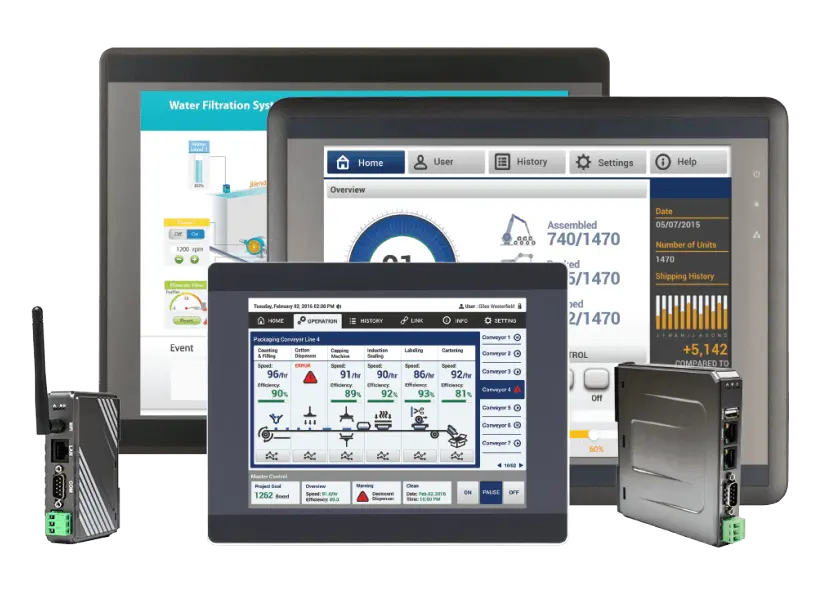HMI Design Guide
At Maple Systems, we’ve created an exclusive HMI Design Guide, in which we review different types of HMIs — as well as their basic functions and new and emerging HMI functions and connectivity options. This guide also covers the role of HMIs in IIoT operations and the trend towards standardization for both open source and proprietary setups.

Table of Contents
- The Origins of Today’s HMIs
- HMI Hardware
- The Five Most Common HMI Hardware Variations
- Complementing HMI Screens
- Basics of Good Design with HMI Software
- HMIs Integrating Control Functions
- HMI Networking and Connectivity
Check out available HMI products

Human-Machine Interfaces (HMIs), previously known as man-machine interfaces or MMSIs, serve as access points on machinery, management stations, and remote locations. They allow plant personnel and end users to visually monitor and control automated operations, machine functions, and outputs.
The interaction between humans and machines is enabled by a graphical user interface (GUI). This interface not only facilitates user interaction but also ensures a smooth flow of information between supervisory tasks and machine-level operations.
HMI hardware plays a crucial role in this interaction.
Traditionally, it integrates compact control electronics and features a ruggedized display screen or touchscreen. Additionally, these displays can vary in design, ranging from LCD screens with tempered glass and cast-aluminum frames to LED-backlit high-definition displays. Furthermore, manufacturers typically equip HMIs with fully sealed enclosures for use in environments facing outdoor elements or indoors with oil, dirt, and machining byproducts. Consequently, this ensures they remain durable and reliable.
In this HMI Design Guide, we’ll explore various HMI types, their core functions, emerging capabilities, and connectivity choices. Additionally, the guide will examine HMIs’ importance in pilot operations and discuss the industry’s move towards standardization.